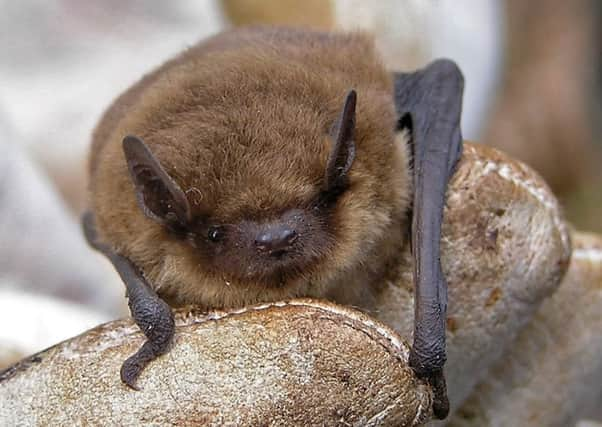Highland hydro plant plan to evict squatting bats


Over 500 furry, flying soprano pipistrelle bats have taken up residence in the walls and roof of Invergarry Hydro’s building.
A dedicated wildlife biologist for energy giants SSE now has the task of relocating the bats to a new roosting hut nearby, so the 12 hydro staff can return to their base.
Advertisement
Hide AdAdvertisement
Hide AdThe bats live only a few hundred feet from the 20megawatt power station which sees water carried from Loch Garry by a tunnel, near the mouth of the River Garry on Loch Oich, before being churned through the plant’s generators to create electricity for the country.
But their presence has left the team, quite literally, out in the cold.
Biologist Alastair Stephen said: “A key priority for us is to ensure the bats are relocated safely and without disruption to their natural behavioural patterns.”
SSE has enlisted the help of Scottish Natural Heritage and Robert Bell from Ecus Consulting to advise on and manage all aspects of the procedure.
SNH is the gatekeeper of the bat relocation process and Mr Bell is experienced at conducting what is a very delicate and specialised procedure.”
Mr Bell said: “It’s great to see companies like SSE taking a creative and responsible approach by undertaking best practice procedure for bat relocation.
“I am excited to be a part of this particular process at Invergarry where SSE has one of the biggest roosts of soprano pipistrelles I’ve ever encountered.
“Bats comprise a range of hugely important species worldwide and protective legislation of the highest level rightly exists across the UK to protect this unique mammal, which has suffered historic declines in abundance.
Advertisement
Hide AdAdvertisement
Hide Ad“Scotland tends to have larger roosts than England – it’s not really known why but is likely to do with either differing weather conditions or a lack of roosting opportunities.
“Much is still unknown about the mysterious behaviour of bats and surveys being undertaken at Invergarry help us understand the character of the existing bat roost in order to design an effective mitigation approach for this species.”
The bats emerge at dusk every summer evening to feed before returning to their mess room roost at sunrise. The bats lodge themselves in tightly to create warmth.
A negative side effect of the bats’ presence, however, is the overpowering smell of ammonia given off by their droppings, extremely unpleasant for human noses.
So bad is the problem that SSE’s Invergarry team has resorted to hiring a portable cabin in which to spend tea breaks and down time to escape the overpowering stench in summer months.
This is proving expensive as time goes by and is not a long term solution when the newly-built, permanent mess room is right next door and lying dormant other than as a summer house for bats.
To allow the exclusion of bats from the mess room a licence must first be obtained by SNH. It is essential the bats are not left without a home and to this end a replacement roost structure, comprising a small hut, is being designed for construction on the banks of Loch Oich.
To further encourage the bats to utilise this new accommodation, three small bat boxes have been placed on adjacent trees and the new roost building will be primed with bat droppings taken from the existing mess building to create a distinctive ‘bat’ aroma.
Advertisement
Hide AdAdvertisement
Hide AdWith the licence in place, the soprano pipistrelle roost in the mess building will be closed in winter 2015-2016, when the bats are absent.
The mess building also supports a trouble-free brown long-eared bat colony, which roosts in the roof void, an area not used by the pipistrelles.
New openings from the exterior into the roof void will be built to allow continued access for the brown long eared bats in future years.
Through our preferred approach of retaining bat roosts where they present minimal issues, whilst constructing replacement facilities to allow exclusion of problem roosts, SSE is doing its bit to protect Scotland’s bat populations.